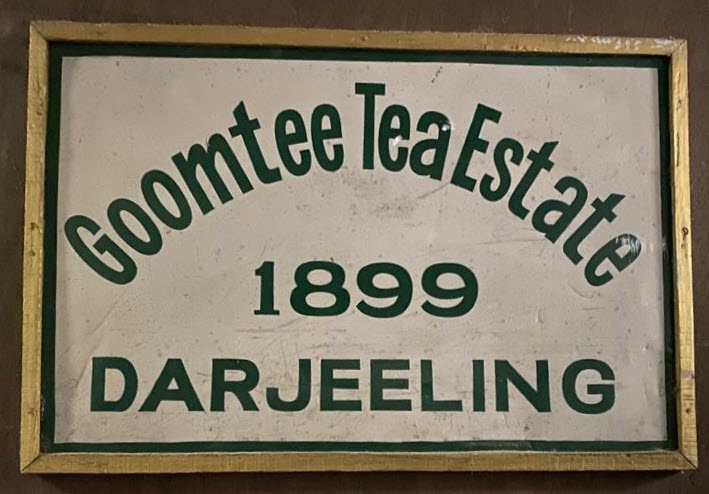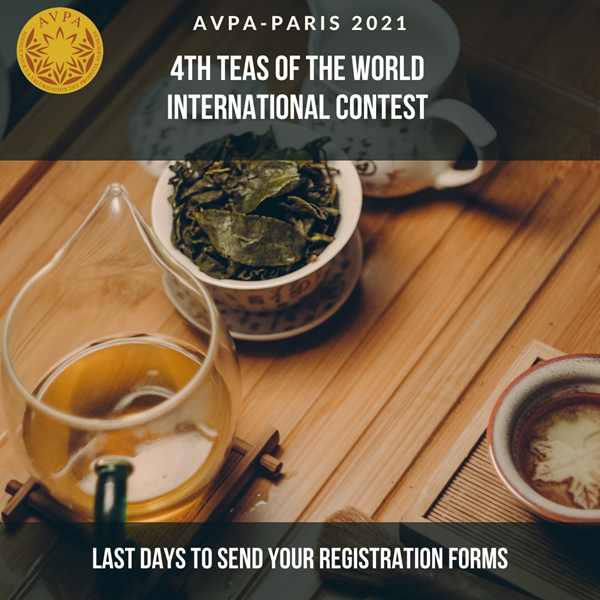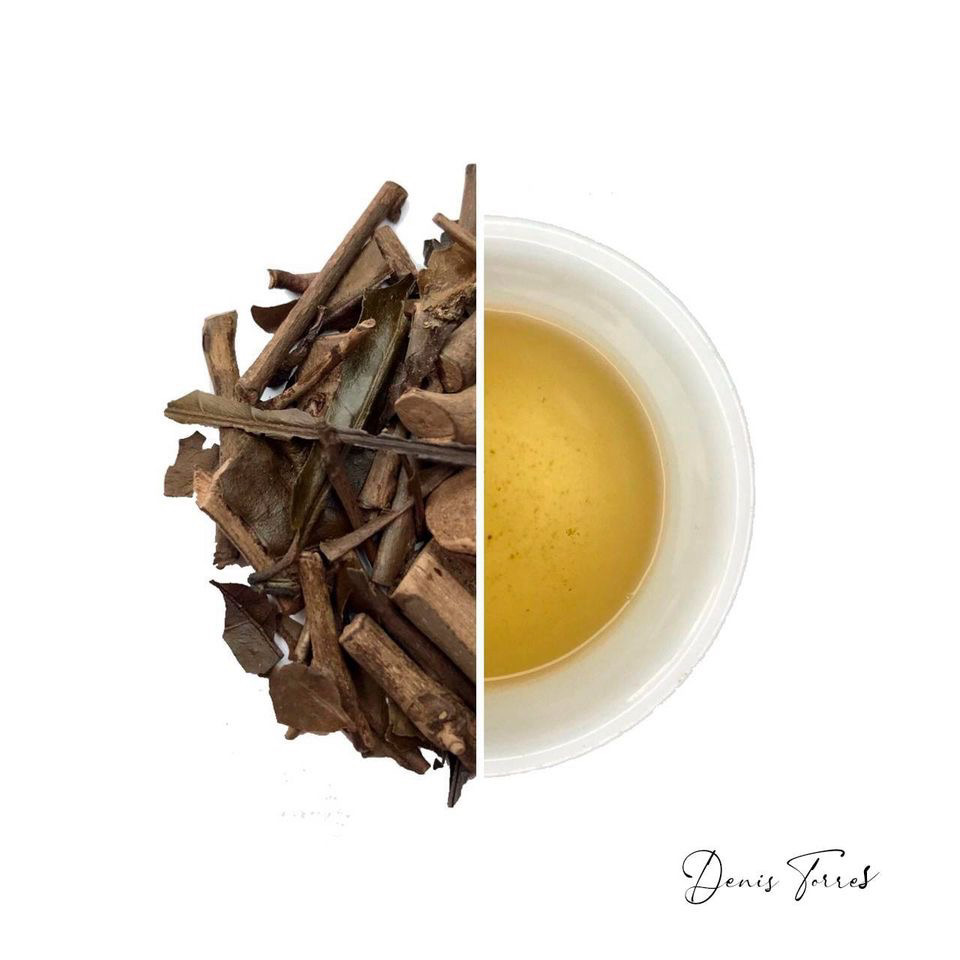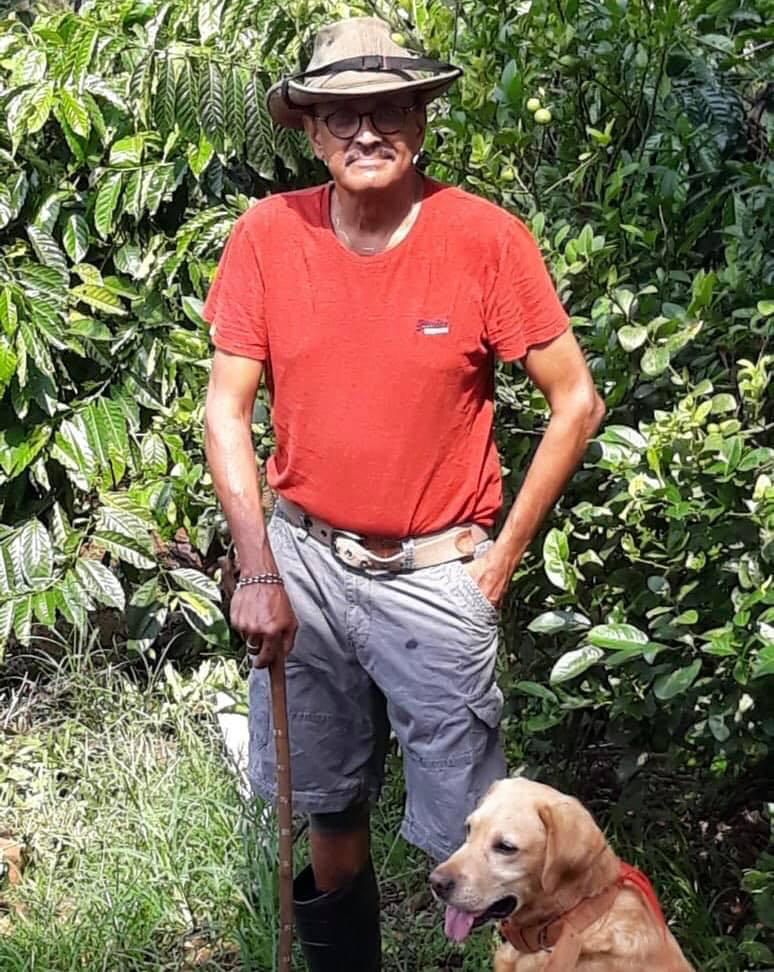The recent sale of two iconic Darjeeling gardens drew attention to the ongoing challenges facing growers in this fabled tea-growing region. Jungpana and Goomtee were acquired by the Santosh Kanoria group, which owns tea exporter, Balaji Agro International. The group also owns the Tindharia estate in Darjeeling. We spoke to Anshuman Kanoria, chairman of Balaji Agro and also chairman, Indian Tea Exporters Association, about this acquisition.
Listen to the interview:

Assessing Darjeeling’s Jungpana and Goomtee Estates
Anshuman Kanoria is chairman, Balaji Agro International, and chairman of the Indian Tea Exporters Association. His company owns the estates Tindharia, Goomtee, and Jungpana in Darjeeling.
Aravinda Anantharaman: What is the mood in Darjeeling? We hear of many gardens going up for sale.
Anshuman Kanoria: The last three years have not been easy. Nature has conspired against us; we had the lockdown last year which affected quality. And this year, we had one of the worst droughts in Darjeeling that affected the first flush. The outlook for Darjeeling is bleak.
There was a time when people used to say that more tea is sold in the garb of Darjeeling than is produced. It was hoped that with the GI [2011 EU authentication and protection as a registered Geographical Indication*] the price for Darjeeling would improve, and there would be more real Darjeeling in the world. As it stands, it has become difficult to find buyers, even for 8 million kilos. Today, 8 million kilos are sold but not at a price even close to the cost of production.
People like to blame it on aging bushes but to the best of their ability, people have planted, replanted, and rejuvenated their bushes. The real problem lies in a combination of climate change, insufficient pluckers, and various disturbances which have been occurring in Darjeeling on a regular basis over the last five or six years.
Wages are a highly sensitive issue. [Jungpana was last sold in 2017, a sale that came on the heels of the Gorka agitation and 103-day tea worker’s strike.] I understand the need to pay much more for workers, but there needs to be a correlation between what a garden is earning and what it can pay for labor.
You have to understand the breakup of Darjeeling production. Approximately 20% of Darjeeling production is the first flush, and approximately 20% is the second flush. Approximately 60% is rain production. Now we can break that down to the grades; in the first and second flush it’s 60% whole leaf, in the rains, it is at a maximum of 55% whole leaf while 45% are broken leaf teas and fannings.
The average cost of production can vary from 10% lower to 30% higher, but let us say, the average cost of production of the garden is $10 (per kilo). So, 42-45% of your annual production, which is broken leaf, fanning, and dust, is selling for less than $4 a kilo; and you’re losing $6. In gardens with a higher cost of production, losses can be even more. Let’s say 60% is the whole leaf; of this, roughly 35% is produced in the rainy period and sold at an average price of less than $8 a kilo. That leaves you with 25% from which to make up that loss. This 25% is the whole leaf production from the first and second flush that is prized quality Darjeeling. We really need to be getting average prices close to $25 per kilo to make ends meet in Darjeeling, which is a very tall ask. Therein lies the mathematics of Darjeeling.
What is the reality? Every year we see a winter drought, which means the first flush will get affected. Every year, we see heavy nonseasonal rain from May onward which disturbs the second flush. So the two periods which are your quality periods where you need to do well, are getting adversely impacted due to climate change.
It is getting more and more difficult to get pluckers. As workers’ children become better educated, their aspirations are naturally increasing. And in the hills we can’t do mechanization, we can only do very limited shear plucking which is not good for quality. On top of that, there is so much pressure now on the industry, in terms of food safety and MRL [Maximum Residue Level] compliance. This is an additional challenge that Darjeeling is facing as well, now that everybody is heading towards greater requirements for compliance and certification.
Aravinda: What does the acquisition of Jungpana and Goomtee estates mean for your company? And for Darjeeling’s tea industry?
Anshuman: This is a decision where my brain kept telling me are you crazy. And my heart said, if not now, then when. Can I make it work? I can give it my best shot. Up till now, the people who used to own these gardens have been either plantation people or investors. Nobody has been in marketing. My forte has been marketing, my core company is Balaji Agro International which is an extremely well-known trading house and we’ve been around since the late 1960s. My father Santosh Kanoria was one of the pioneers in the field of export.
My focus is going to be quality. My number one concern is the back end. You can have a garden like Jungpana and call it the ‘Louis Vuitton’ of Darjeeling tea, but that claim is worthless unless and until the product is good. It should taste good. It should be aspirational. I can create a story around it, I can leverage the story of Jungpana but my first focus is restoring the quality and restoring the discipline of working in the plantation; of establishing much better plantation management. It’s shocking beyond my comprehension how these estates have been just left to flounder.
We have already started to get them back on the road to recovery, putting different practices into play and much better administrators. I think the workers also recognize that now they have somebody much more serious about the tea. I’m praying that I get the cooperation of people to try and restore it.
Am I a hundred percent sure I’ve done the right thing? Definitely not. Financially, it could be my greatest disaster, something that can really set me back in a massive way. I have no illusions.
I think Jungpana is a much bigger brand name but it is also a much more adversely affected garden. It’s a beautiful garden, it’s a beautiful brand but we are treading much more on a short-term basis. The challenges with Jungpana are immense. Frankly, we are giving it our best shot but I have to really consider if in the long-term I want to keep it.
Goomtee is a garden that we want under our umbrella. My first aim is to make it 100 percent organic. We will begin the [three-year] conversion this year. I believe organic is the way forward for Darjeeling. We have a lot of plans for Goomtee but Jungpana – we have kept our options open in terms of our long-term holding of Jungpana.
We ended up buying both the gardens because it was offered as a package deal and I did not have a way to buy only Goomtee.
Aravinda: What about your other garden, Tindharia? What do you make there?
Anshuman: In Tindharia, in the first flush we make a conventional black tea. It’s doing very well. Almost all of it has gone to Germany with a bit of it going to Japan and the US.
In the second flush, we make conventional (conventional in terms of quality) black tea from our China and clonal section. But around the second flush period, that is some part of May, most of June onward, we turn the garden into a green tea garden.
My father had mastered a very old art of making green tea, which does not use the conventional method. We bathe each freshly plucked green leaf to remove the bitterness from the leaf and all the dust that has settled on it. It is a much more extensive and worker-intensive method to produce it, but we produce it.
The tea is very well received and hence the demand has been more than what we can produce. The garden produces approximately 65-70% green tea and 30-35% conventional black tea. It is an organic garden. In Darjeeling, if you want to survive in the long term unless you are to be a high-yield, low-cost production estate, in which case you might survive without being organic, but everybody else should really be organic.
Aravinda: You also head the exporters’ association. What are your views on the export market? Is it still sustaining Darjeeling? How are the dependencies changing? How is Darjeeling holding out to the competition?
Anshuman: I think we have mishandled a lot of things. For example, when the GI* registry was approved, there was a belief that our importers were cheating (that belief didn’t come from me, but it came from a section of the trade, which was very misguided in my view). They reasoned if they could prevent passing off non-Darjeeling as Darjeeling teas, they would have a great price discovery and there would be a financial boom for Darjeeling. I think the premise that [40 million kilos] of tea grown elsewhere was being passed off as Darjeeling was exaggerated. Secondly, it was presented to buyers in a manner that, ‘Okay, now we are the policemen and we are going to catch you wherever you go.’
You can’t regulate your buyers with a stick like that.
The buyers had no benefit. They were told, ‘You are thieves, you are going to be regulated.’ And all these fancy logos that we managed to get… I mean what good is a logo if you don’t attach value to it? We have not pumped in any money behind our logo promotion.
And, really, who is responsible for having popularized Darjeeling tea? I would say it is the German importers, to whom we owe everything. It is not the growers, it is not the exporters, it is not the government, it is not the Tea Board of India. It is the Germans who have taken the tea and made it popular around the world. They may have kept larger cuts for themselves, but we still owe it to them. They are the ones who are gunning for us.
And instead of trying to take them along, we have really tried to be confrontational. I think that the GI registry, which could have done very good things for Darjeeling, started off on a very bad note and alienated a lot of people who were supporting Darjeeling.
The other big mistake was taking the auction online from a manual system. What used to happen was producers concentrated on producing tea while the marketing was being done by tea exporters. In a physical auction, the room used to be full, there used to be many people buying tea and they were all bitter competitors. So everyone used to make sure that nothing sold cheaply to anyone. How do you bring about price discovery? True price discovery comes from competition. The old auction system, the manual auction, used to create much more competition. Now we have almost every grower selling directly to a limited number of buyers. Where is the competition? The merchant exporters who used to be the backbone of the industry, have almost lost interest in Darjeeling. And each merchant exporter was catering to 20-30 buyers. If you had 20 people like that, you had competition coming from 300-400 sources.
The Germans are very keen to promote Nepal. They look at Nepal as something truly exotic. Production of hill-grown Nepal has gone up to something like 6 million kilos. They don’t have labor laws or food safety laws as we do. They don’t have a Plantation Labour Act like we do. They are not estates. They’re all small factories, which are buying tea from small growers. So their cost for production is in line with the market. So they can’t lose money. The small growers get what they can get. And the Germans are happy to promote it as something exotic.
Aravinda: Do you think the damage to Darjeeling’s reputation with buyers has reached the point of no return, or is there some hope to revive this relationship and see what comes of it?
Anshuman: If I thought there was no chance I wouldn’t have gotten into all this.
I know that costs will increase. And I can only keep my fingers crossed that the labor union, the government will understand the plight of the industry and not try to impose such figures on us which are “unsustainable.”
Every time I go abroad, participate in a trade show, or at a conference, the word I hear the most is “sustainable”. And we have the gurus of the import trade give us long-winded sermons about how we need to ensure soil sustainability, water sustainability. I have only one question: What about the financial sustainability of the estates? Every time we try to bring up prices, we are told there is a war among supermarkets and we have to keep prices low. Consumers want everything, but don’t want to pay for it. What do we do? Either we pay the labor nothing, which is not possible in today’s India, or we lose money to a point where we are not sustainable. Plantations are going to lose out to tourism or some other crop and tea will be secondary. There are maybe 5 or 6 or 7 owners today who have a real passion for Darjeeling and a real commitment for Darjeeling. It’s in our blood. This is why Darjeeling is still alive. Otherwise, even on a macroeconomic level, there is no future for Darjeeling.
Aravinda: What about innovation in the tea itself?
Anshuman: Well, take the example of Tindharia. If I had tried to run this as a pure black tea garden, the garden wouldn’t have survived. You have to basically see the leaf profile and the quality profile of your estate. And you have to think about what kind of a product mix you want to have based on what quality output you can get from your garden at any given time during the year.
We can do green tea and we have enough challenges with green tea because the whole leaf green tea has a market. But 40-45% of the smaller grade, which is the broken leaf and fannings, has a very limited market.
Aravinda: So, is there a need for something like the Muscatel that sets Darjeeling apart from everybody?
Anshuman: All the new planting that has been done in Darjeeling uses clonal bushes. You hear fancy names like AV2, P123, etc, which are great denominators of quality in Darjeeling. But these are bushes with a very specific flavor profile. And the gardens in Nepal have very similar bushes and young bushes at that. And the thing about these bushes is, whether you are located at 2,000 feet altitude or 6,000 feet; or whether you are located on this side of the hill or the other side of the hill, your flavor character is going to be very similar. You might have a higher flavor or a lower less intense flavor but it’s going to be the same character. You’re not going to get a muscatel flavor from a clonal bush. The muscatel flavor comes from a China bush. And when you uproot your China bushes to plant clonal bushes, you are actually sacrificing the USP [unique sales proposition] of Darjeeling which is that Muscatel which you find in this bush. So we have to really strike that balance with keeping our China character which is something that Nepal can never compete with. That is what stands Darjeeling apart. I can understand replacing a lot of the Assam, the Assam hybrid bushes, with the clonal bushes. But I’m not really in support of replacing any good China sections with anything clonal.
Aravinda: What about the domestic market? There’s more talk about the domestic market these days than there ever has been. Do you think it’s not been explored enough and two, do you think the time has come, or is it just a desperate attempt to find a significant market?
Anshuman: So I have a cynical view. Nowadays I’m seeing a lot of people, producers are investing in their e-commerce operations and their website management. There are a lot of other companies, smaller startups, which are trying to be a B2C e-commerce operation. I don’t think most of them are asking themselves the question, ‘What sets me apart?’ They just think this is a good idea, let’s do it, let’s try to make a little bit of money, we don’t have an idea of what else to do.
Another category, which has done this in a bigger way, managed to get a hell of a lot of investor funding and they have their own USP. I quite admire what Vahdam Tea has done, for example, and the way they have positioned themselves in the US. But there are a lot of small startups who are really coming in the hope that they will get some footfalls, get acquired by somebody else, or let’s get some investor funding and make some money. I don’t know how much they really think they can really increase demand. And they’re starting off from a very low base of how much good tea they are selling on an e-commerce platform in India.
If you give me any growth number in terms of percentage, it means nothing; if you’re starting off with 5 metric tons of tea and you say we went to 500 metric tons, that’s something.
I think the Indian market has potential, there is no doubt about it. I think the pandemic has given an opportunity as well. Tea is associated with wellness. We all know the health benefits of tea. And we need to somehow combine the platform of health, great taste, and a lifestyle and build that story around tea. That’s a lot of hard work. I’m not sure how many people are really going to attempt to do that. I sincerely hope that given the employment numbers of tea, the fact that Darjeeling is so strategically located, that it is a flag bearer of quality for Indian tea, it’s a GI product for India, I truly hope that the government of India, will come and lend a hand because Darjeeling at the moment is struggling, after the kind of pitfalls it has faced, particularly during the strike of 2017 and the lockdown came right after, and then in 2021, the drought came. I don’t believe in government subsidies but right now, looking at the kind of situation we are facing, I truly hope the government will come up with some kind of scheme. It’s not about handouts, it’s about promotion.
What can save Darjeeling? Some help from the government for promotion, some kind of a development package as a one-off thing just to help Darjeeling stand up again from the three blows it has received in the last few years, taking that into account. We need to completely focus again on quality.
It’s also very clear that a tea garden will find it difficult to survive only as a tea garden. The government now allows you to use a part of your land for other activities, whether it is tea tourism or whatever. I think we have to all utilize our land and look at land parcels and also try to get revenue.
Aravinda: What do you make of the recent Tea Board mandate on the 50% production to be routed via auctions?
Anshuman: One of the problems with Indian tea, in general, is you have so many different marketing platforms. You have an auction that is over-regulated, micromanaged by the Tea Board. You have completely unregulated private sales where a producer can choose to give a 3-month credit to a buyer. You have a producer-exporter doing direct exports, you have a producer doing direct packaging for the domestic market. So in a multi-faceted marketing environment, what is the future of an over-regulated auction system by the Tea Board? We need the auction, for sure. But not with the current set of regulations and rules. This is something that the government has to take note of and completely deregulate and let the stakeholders run it.
The Tea Board has many more important things to do, such as concentrating on tea promotion.
Aravinda: Your acquisition of the gardens has brought some optimism to Darjeeling. Why is that?
Anshuman: Optimism came from the fact that there has been a lot of speculation as to what we have paid for the gardens. I refuse to go on record and confirm but it’s very clear that we have paid a hefty price. So a lot of the optimism came from other people who want to sell their garden and think now there will be a resurgence in the valuation of Darjeeling gardens. A conservative guy like me entering Darjeeling despite the odds will probably increase the prospect of others being able to sell their gardens at a reasonable price.
There was also some optimism from traditional tea purists who saw the garden changing hands from a group with no background or commitment to Darjeeling, to us, who really have a passion for Darjeeling and some understanding of it. I want to burst their bubble a little bit by saying that this acquisition was really not something my mind advised me to do.
Wherever we are today, as a group in terms of our financial standing, in terms of our business tactics, I owe a lot of this to Darjeeling. These gardens have also played a role in helping us achieve something. So I just told myself that if I am going to lose a lot of money, I am paying it back to Darjeeling to give it one shot.
When the gardens were owned by the Kejriwal family, I was deeply associated with these properties. And that is one of the reasons my heart took over because I have spent time in these gardens, I have bought thousands and thousands of tons of their teas over the years, and I have marketed these teas.
But should my acquisition give hope to people? God no!
There is optimism, but the optimism is for different reasons, some of which are selfish, some of which are daunting. As I said, I’m not here to make a statement. I know what I’m going to do. I have plans to make the gardens much better managed. They are already in play. We are seeing some differences at the ground level day by day. Other than that, is it going to be economically viable? I don’t know.

*Beginning in 1983 growers in Darjeeling sought to register the 87 gardens there as a protected Geographical Indication. The European Union granted GI protection in 2011. Prior to that time, many teas sold as Darjeeling were blended with similar teas for consistency year to year, an accepted practice. In other instances, these teas were blended (up to 50%) with inferior teas and marketed as Darjeeling. The GI rules allowed a period of transition to deplete stock and then required blenders and growers to market only teas grown within the recognized boundaries as Darjeeling. Teas qualify for a seal of authenticity for marketing purposes and legal remedies if fraudulent brands are sold.
This interview has been edited and condensed.

Jungpana and Goomtee Tea Estates
The two estates are located 12 kilometers from Kurseong in steep and remote terrain. Roads are primitive and the factory is connected through a snaking pathway, accessible only on foot. Jungpana, founded in 1931, is spread over 78 acres (32 hectares) at 3,300 to 4,900 feet above sea level. On arrival, visitors must climb more than 350 steep steps on a pathway to the garden factory that crosses a footbridge over Changey Khola, a small fast-moving mountain stream. Surrounding areas include the Goomtee Tea Estate, a 600-acre expanse of land with forests, mountain slopes, streams, waterfalls, and tea fields.
-Dan Bolton
Share this post with your friends in tea.
Signup and receive Tea Biz weekly in your inbox.
Never Miss an Episode
Subscribe wherever you enjoy podcasts:
















